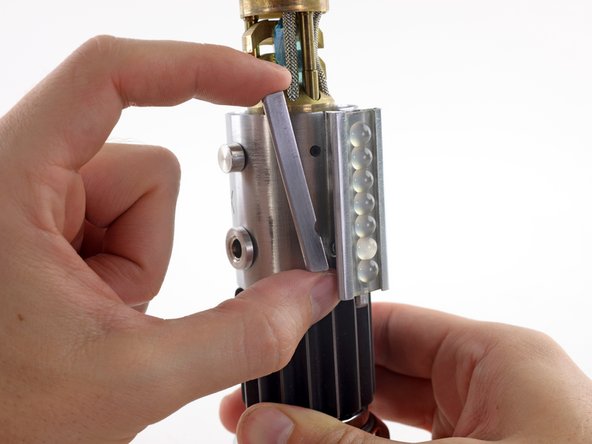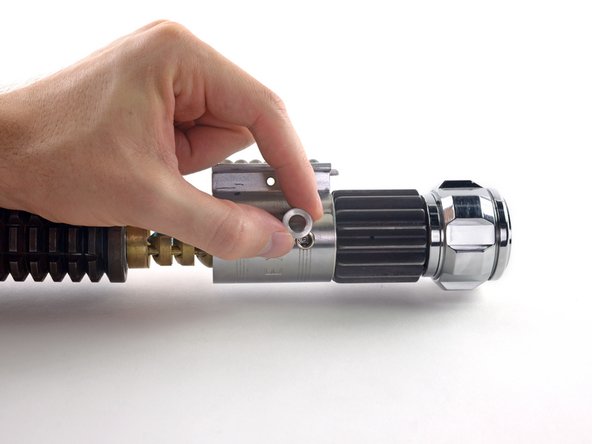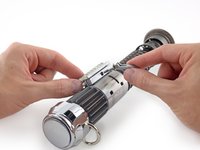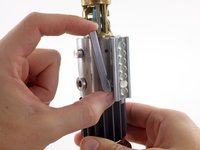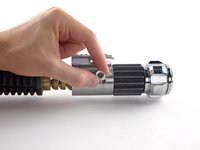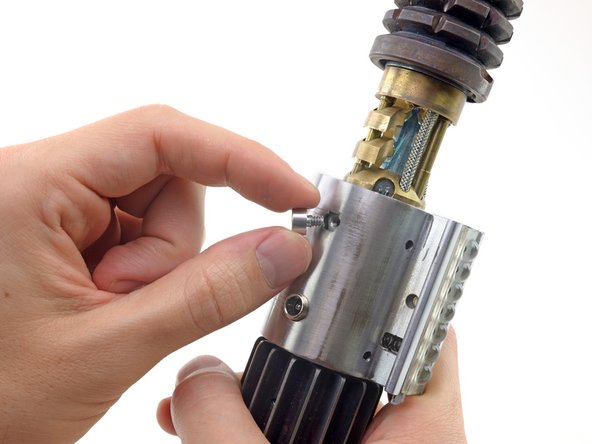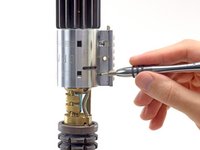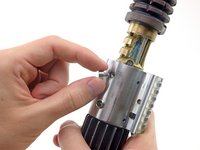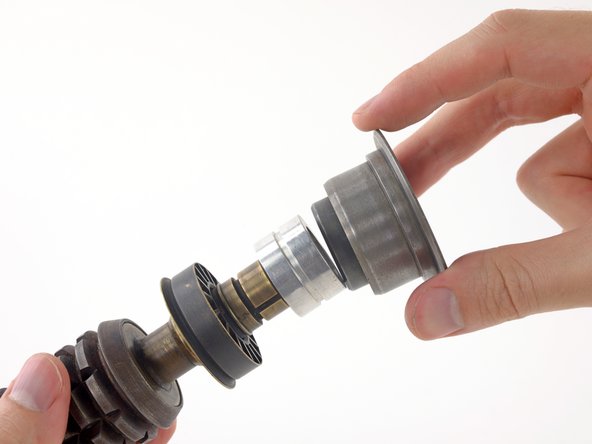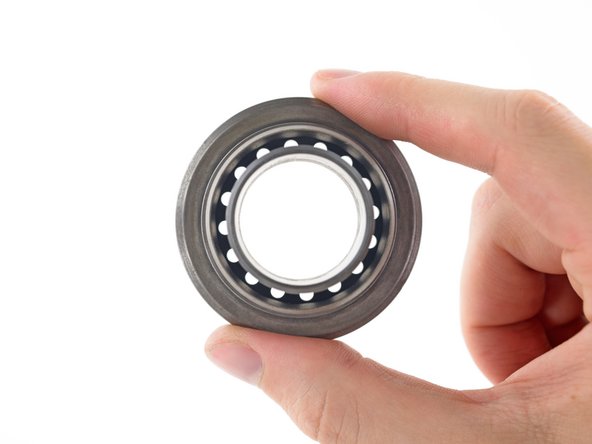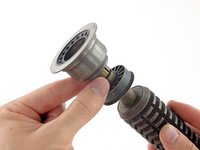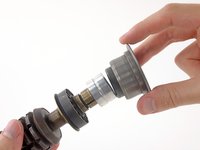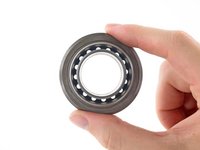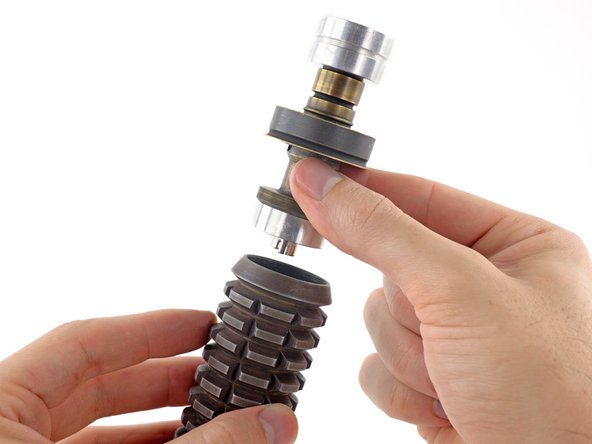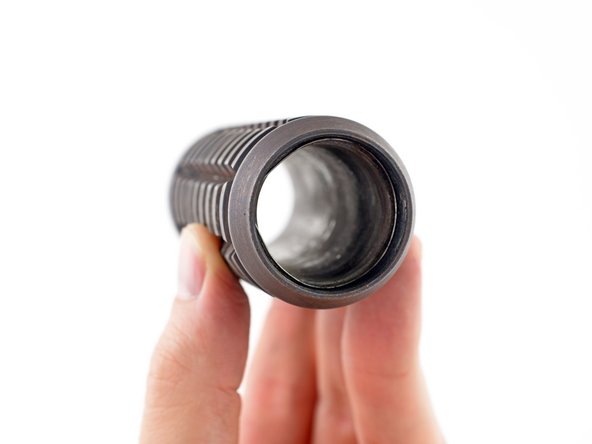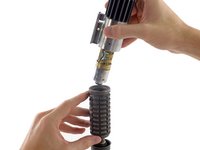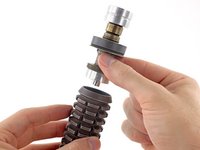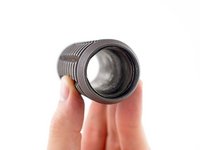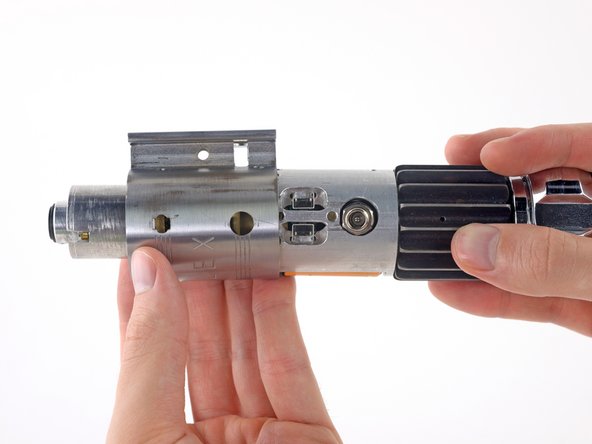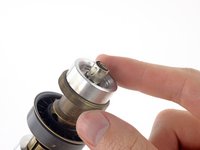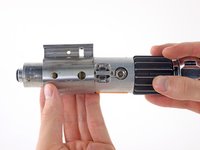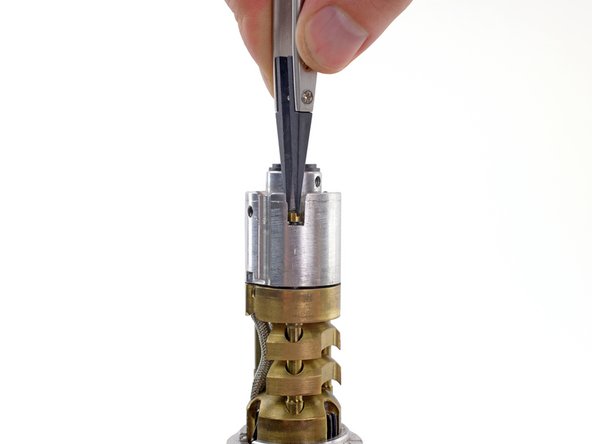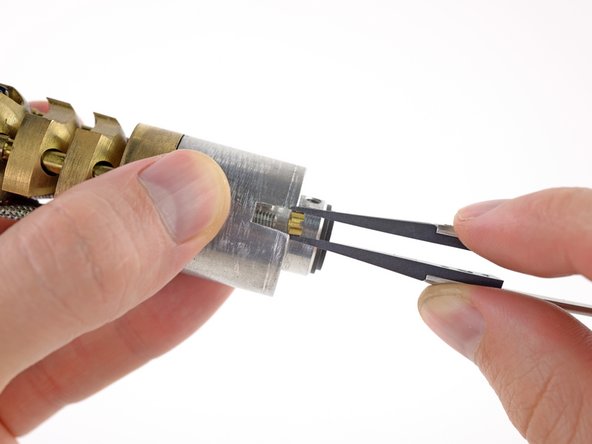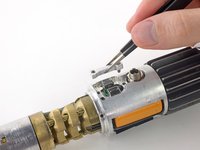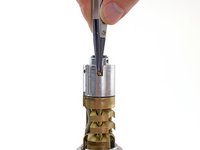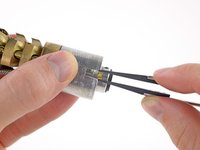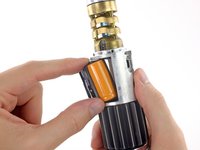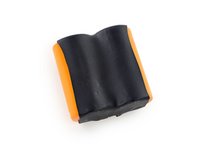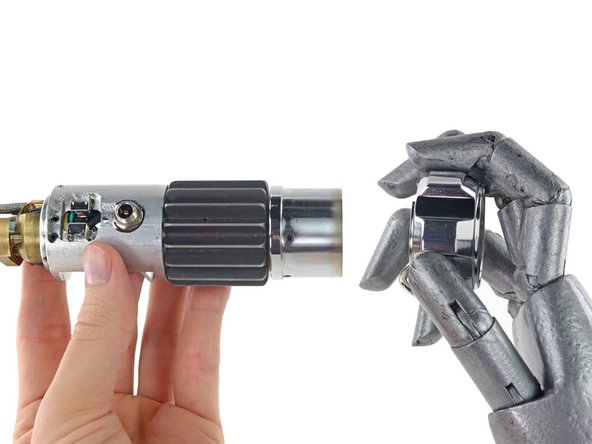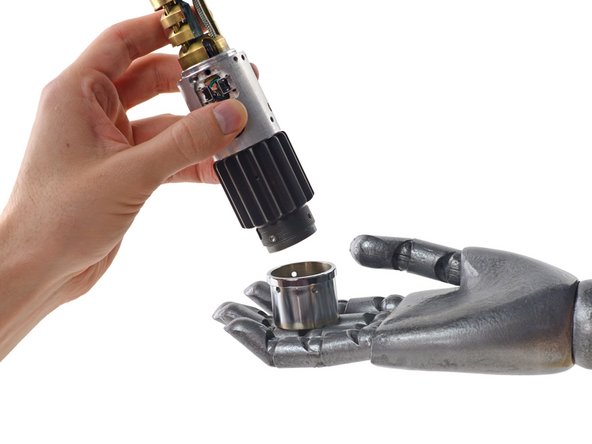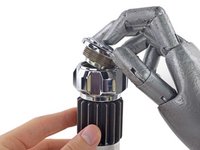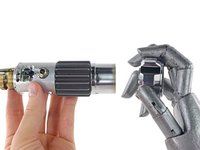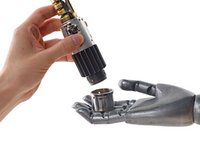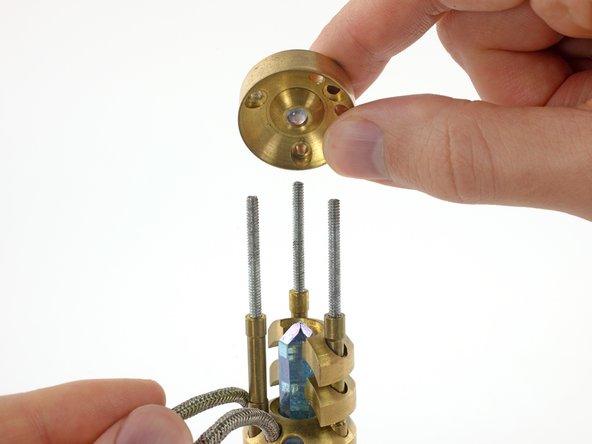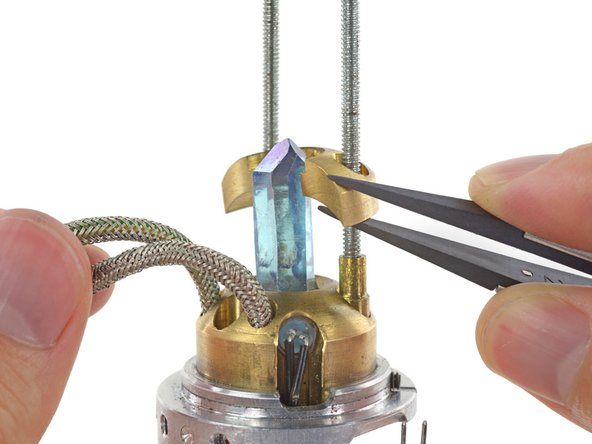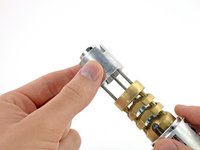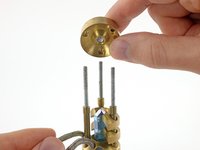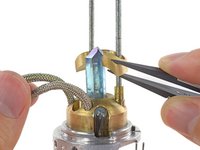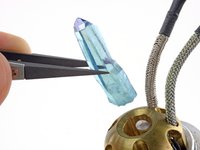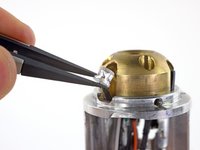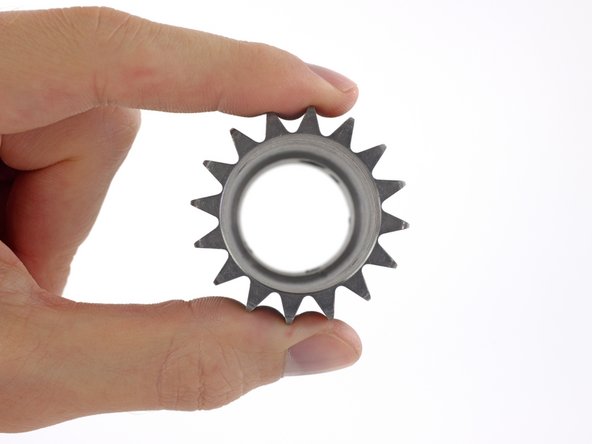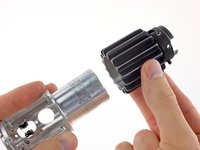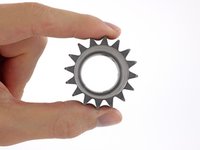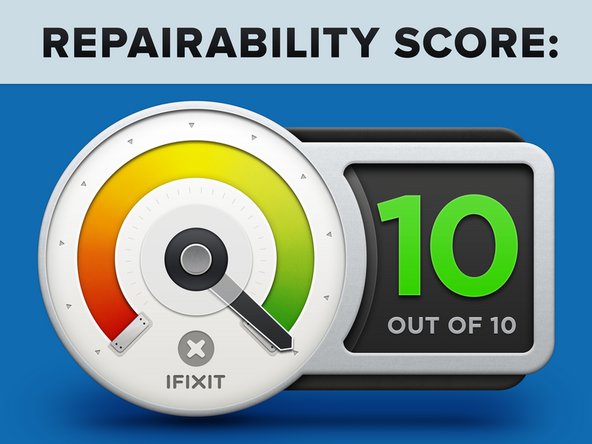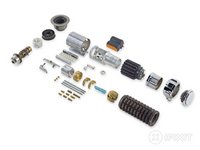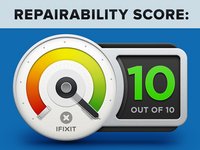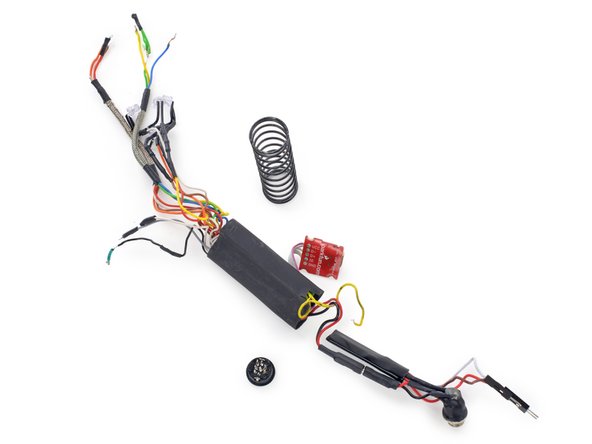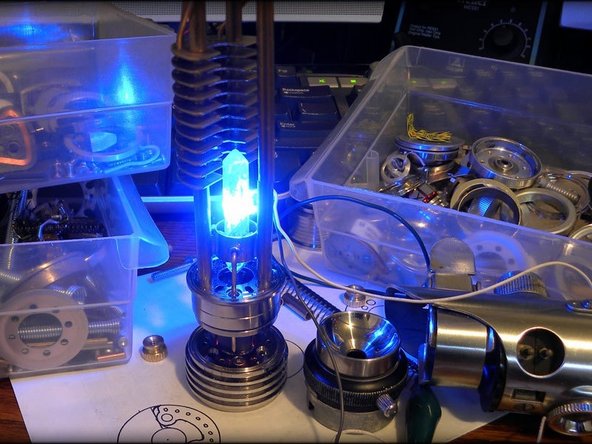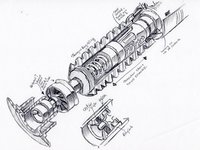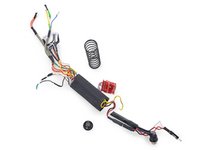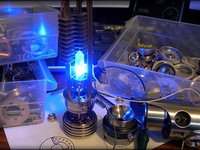Introduction
Passez à l'étape 1Ce dont vous avez besoin
Outils
Afficher plus…
-
-
Listen up, nerfherders: We've got a lightsaber on the teardown table. Before we dive in, let's take a look at the specs:
-
Manufacturer: Obi-Wan Kenobi
-
Crystal: single blue Adegan crystal
-
Production date: 22 BBY (Before Battle of Yavin)
-
Length: 15.8 cm
-
-
-
Do you have the death sentence on twelve systems? Do you frequent wretched hives of scum and villainy? Then you probably don't want to see this saber firing up.
-
If only we were Force adepts, we could release this interior clasp with a simple wave of the hand. Instead, we nudge it free with the tip of a spudger, revealing the crystal chamber.
-
-
-
We'll get back to that crystal chamber a bit later. For now, we set out to open the saber itself.
-
Let's start by unscrewing this clamp pin that secures the switch housing cover.
-
With the pin removed, we're able to lift the clamp brackets out with no trouble.
-
Unscrewing this small retaining ring loosens the port from the housing cover.
-
-
-
We quickly dispatch a few tiny set screws securing the clamp to the body of the lightsaber.
-
With the set screws removed, we extract the activation stud.
-
-
-
-
At first, we're a bit stumped by the crystal chamber cover. Turns out it's quite easy to remove with a half-twist and some well-targeted pressure.
-
We subject the cover to a small battery of tests; it's made of an unknown material that is both nonmagnetic and nonconducting.
-
With its smooth inner surface and segmented exterior, this looks designed to protect the wielder from the saber's extreme energy output, while possibly providing a small measure of cooling for the internals.
-
-
-
With the shroud removed, the blade emitter comes into full view.
-
Some say this ancient weapon is no match for a good blaster at your side. Whichever view you take, you have to respect this kind of craftsmanship.
-
At this point, we've cleared the way to slide the clamp free and expose the switch housing.
-
-
-
You won't find any regular old lithium ion batteries here! This lightsaber features a diatium power cell.
-
The Force is strong with this one—the recharge port seems a tad redundant, as a properly-maintained diatium power cell will last indefinitely.
-
-
-
In case of any more surprises, we get a hand from a friend.
-
Next we unscrew the pommel cap, hoping to find a backup power cell.
-
No luck—we're able to remove an intermediary collar, but we don't find a reserve power cell.
-
Time to get a closer look at that crystal chamber.
-
-
-
That's no moon—it's the focusing crystal.
-
We gingerly remove both the cycling field energizer and the focusing crystal activator from atop the crystal chamber.
-
Excited to get an unobstructed view of the primary crystal, we pull back the energy modulation circuits—and lift away the crystal chamber cooling fins.
-
-
-
We finally arrive at the heart of the lightsaber, the primary crystal.
-
This particular lightsaber uses a blue Adegan crystal, typical of a Jedi. Sith lightsabers are commonly made with synthetic red crystals.
-
We peel away the three neatly packed crystal energizers from the primary crystal housing.
-
-
-
We slide the rear grip and inert power insulator from the hilt.
-
Though the rear grip resembles a heat sink, this design avoids the dramatic overheating problems seen in early lightsabers.
-
Looks like the extra space down here might be for upgrades, or possibly for the expert balance Obi-Wan surely requires of his saber.
-
-
-
Lightsaber Repairability Score: 10 out of 10 (10 is easiest to repair)
-
Extremely durable components make the need for repair unlikely outside of severe combat damage.
-
Robust diatium power cell lasts the life of the device.
-
Recharge port allows for topping up the power cell in extreme circumstances.
-
No adhesive anywhere; all components are removable with basic tools.
-
Replacing the rare Adegan crystal requires a trip to remote star systems, or paying a hefty fee to an enterprising smuggler.
-
Lack of published repair documentation means you'll have to rely on your Jedi abilities to figure all this out. (But the Force has a strong influence on our weak minds, so we're still giving it a 10/10.)
-
-
-
And now for the bits we didn't show you—because while lightsabers exist in a galaxy far, far away, this particular piece of Jedi kit was built by a true sabersmith here on Earth.
-
Many thanks to the amazingly talented Brad Lewis, who generously loaned us one of his hand-crafted, better-than-movie-accurate lightsaber replicas for this teardown. You can see his complete build log for this lightsaber, and many others, at SlothFurnace.com—or, check him out on Facebook or Twitter!
-
Thanks Brad! And may the Force be with you—always.
-
20 commentaires
Nice Teardown. Have the tools but no Lightsaber :(
You guys did a great job! Happy to be part of it.
-sloth
Neil, the crystal is an actual aqua aura quartz crystal. Hand selected for this build, and the mount machined to fit it.
Thanks for the information about the crystal.. nice work for the hand also..
Neil -
The fix is strong with you
No doubt - this is the art of teardown we want to see!!
Now the only question is: How long it will take to the teardown of the Millenium Falcon?!? And how is Han about it?!?
I like so much this site... and this saber!!!!
Hi,
I'm having weird grounding problem with my lightsaber - the plasma beam shows light interference. I think the surge circuit is in ground loop with AC mains as this interference is much more prominent when placed near transformers (Desktop PSU or laptop power brick). I was not able to measure capacitance of the two inverting capacitors from the dilithium cell - their value is likely in kilofarads (both seem to overload my digital multimeter, but there is some sort of voltage difference between the body and negative terminals - upon connecting those to my oscilloscope, I measured 450mV slew at 150Hz with 5% THD+N, so it seems there is a grounding problem between the body and the internal electronics (I'm based in Europe, with 230V 50Hz mains). Any idea where the problem might be, or which components need replacing?
Based on your description, I'd say the culprit is the dilithium cell. Building lightsabers is tricky business, so if you're going to use technology from another universe, you're on your own my friend!
Amazing ! give me one of them and I will pay on soon...Okey
this was helpful thank you
Where to buy it ? :(













